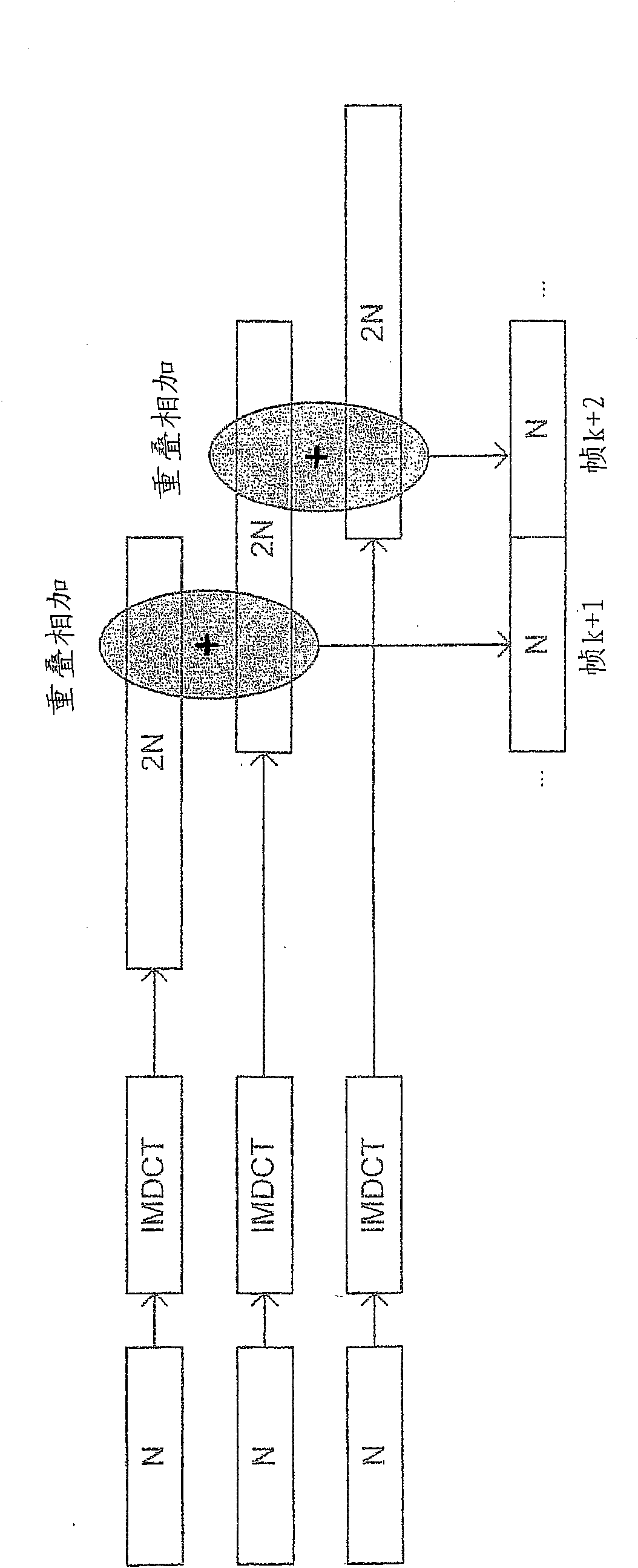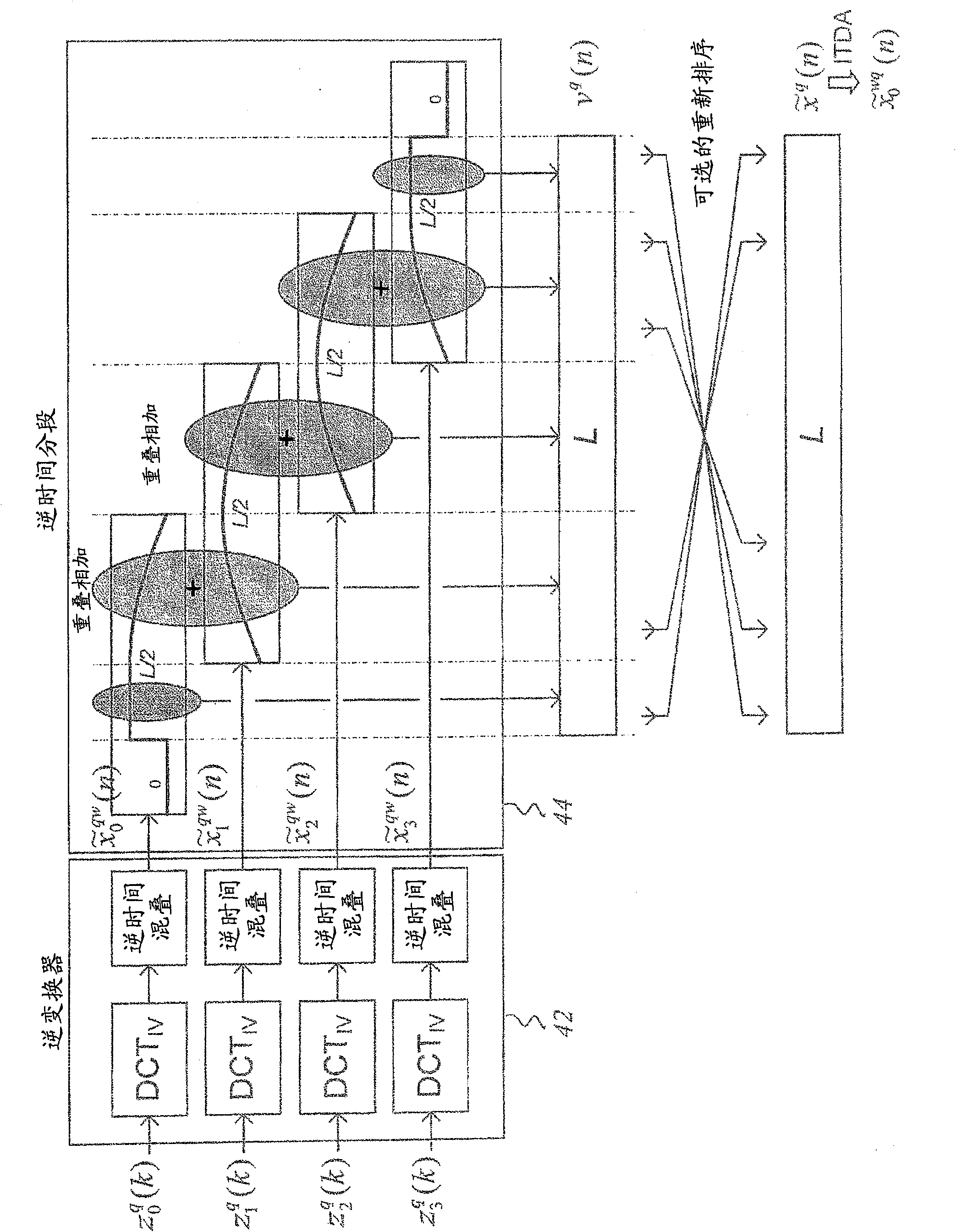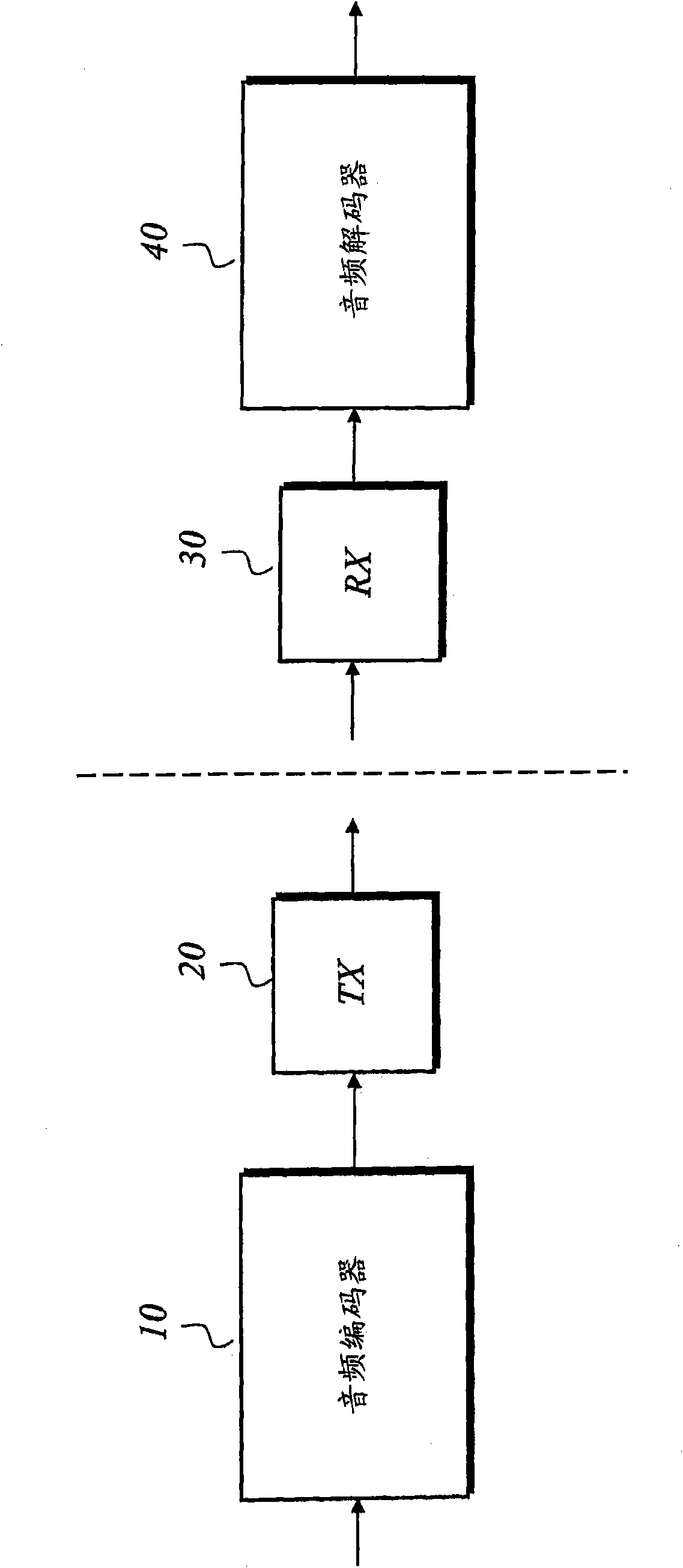Low-complexity spectral analysis/synthesis using selectable time resolution
A spectrum analysis and time technology, applied in the field of signal processing, can solve the problems that the switching window cannot be completed instantaneously, the transition window is poor, and the delay is increased
- Summary
- Abstract
- Description
- Claims
- Application Information
AI Technical Summary
Problems solved by technology
Method used
Image
Examples
Embodiment Construction
[0065] Throughout the drawings, the same reference numerals will be used for corresponding or analogous elements.
[0066] In order to better understand the invention, it may be useful to start with a short introduction to transform coding and in particular transform coding based on so-called lapped transforms.
[0067] As mentioned earlier, transform codecs are usually based on time domain to frequency domain transforms such as DCT (Discrete Cosine Transform), lapped transforms such as Modified Discrete Cosine Transform (MDCT) or Modulated Latched Transform (MLT).
[0068] For example, the Modified Discrete Cosine Transform (MDCT) is a Fourier-related transform based on the Type IV Discrete Cosine Transform (DCT-IV), with the additional property that it is overlapped: it is designed to work on successive blocks of larger data sets implementation, where subsequent blocks are overlapped (so-called overlapping frames) so that the second half of one block coincides with the first...
PUM
 Login to View More
Login to View More Abstract
Description
Claims
Application Information
 Login to View More
Login to View More - R&D
- Intellectual Property
- Life Sciences
- Materials
- Tech Scout
- Unparalleled Data Quality
- Higher Quality Content
- 60% Fewer Hallucinations
Browse by: Latest US Patents, China's latest patents, Technical Efficacy Thesaurus, Application Domain, Technology Topic, Popular Technical Reports.
© 2025 PatSnap. All rights reserved.Legal|Privacy policy|Modern Slavery Act Transparency Statement|Sitemap|About US| Contact US: help@patsnap.com



